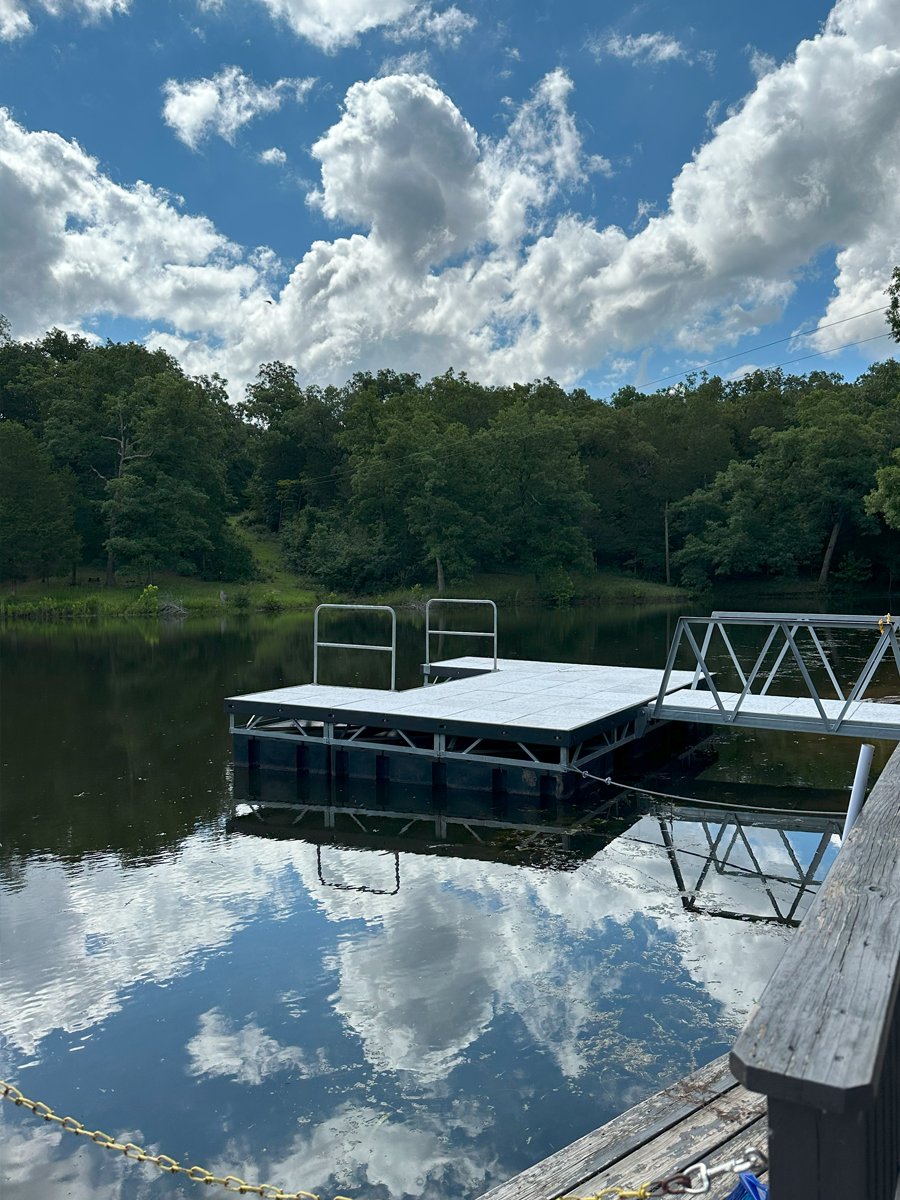
Kayaking: Paddling Away
Experience the tranquility of kayaking on Kirchner’s Lake, where nature meets adventure! Our accessible dock makes it easy for everyone to embark on a kayaking journey, ensuring a seamless transition from shore to water. Glide across the serene lake, surrounded by picturesque scenery and the soothing sounds of nature. Whether you’re a seasoned paddler or a first-timer, the calm waters offer a perfect setting for relaxation and exploration. Enjoy the freedom to paddle at your own pace, taking in the beautiful views and perhaps spotting local wildlife along the way. Kirchner’s Lake is not just a destination; it’s an experience waiting to be discovered!
The Kirchner’s Lakefront Accessible Dock was made possible through generous funding from the Jefferson Foundation, Cedar Hill Elks Lodge, and the donations of attendees from the 2023 Sippin’ for Sunnyhill event.
About the Kayaking Adventures
-
Kirchner’s Lake
-
xxx Ft from Parking
xxx Ft from Restrooms
xxx Ft from Lodging
xxx Grade Incline
-
Wood Docks
Wide Sidewalk Entrance
-
Proprioceptive Input, High Input
Vestibular Input, High Input
Tactile Input, High Input
Visual Input, Medium Input
Auditory Input, Medium Input
Olfactory Input, High Input
Cognitive Input, Medium Input
Temperature, Seasonal
-
Height:
Weight: Max
Ages:
-
Life Jacket
-
-
-
Sensory Load Considerations:
Moderate to High Sensory Load: Kayaking generally creates a moderate to high sensory load due to the combined proprioceptive, vestibular, tactile, auditory, and visual inputs. The overall sensory experience can vary greatly depending on the environment and individual preferences.
Calming and Rhythmic: For many, especially those who enjoy rhythmic and repetitive activities, kayaking can be a calming and centering experience, providing a satisfying combination of physical exertion and sensory input.
Potential for Overload: In more dynamic environments, such as in rough waters, or for individuals with sensitivities to motion, touch, or noise, kayaking might lead to sensory overload, especially if the activity becomes stressful or the sensory input is too intense.
In summary, kayaking does create a sensory load that involves proprioceptive, vestibular, tactile, auditory, and visual input. For many people, kayaking offers a balanced sensory experience that can be both physically engaging and mentally relaxing. However, the potential for sensory overload exists, particularly in more challenging or unpredictable environments.
-
Paddling involves repetitive arm and torso movements, which provide strong proprioceptive input. The resistance of the water against the paddle requires the use of strength and coordination, which can be grounding and organizing for those who seek deep pressure and muscle engagement.
-
Kayaking requires maintaining balance and stability on the water, which engages the vestibular system. The gentle rocking of the kayak, changes in direction, and the need to keep steady on moving water all provide vestibular input. This can be soothing for some or disorienting for those sensitive to motion.
-
The tactile experience in kayaking comes from handling the paddle, feeling the water splash, and the sensation of the kayak’s seat and surface. The contact with water and the varying textures of the paddle and kayak can be either enjoyable or uncomfortable, depending on individual tactile sensitivities.
-
Kayaking offers a constantly changing visual environment, with water reflections, surrounding landscapes, and other moving elements like wildlife or other kayakers. This visual stimulation can be enjoyable, but it may become overwhelming if the environment is busy or visually complex.
-
The sound of water splashing, the paddle cutting through the water, wind, birds, and other natural sounds contribute to the auditory experience. For those sensitive to sound, these inputs can be either calming or overwhelming, especially in environments with unpredictable noises, like waves or rapids.
-
The scent of water, plants, and the surrounding environment provides olfactory input. These smells are generally subtle but can add to the sensory experience. For some, the natural smells are pleasant and grounding, while others may find them distracting or unpleasant.
-
The scent of chlorine in a pool can provide olfactory input. Additionally, there may be a taste component if water gets into the mouth.
-
Kayaking often requires focus on navigation, maintaining balance, and dealing with any obstacles or changes in water conditions. The emotional experience can range from relaxing and meditative in calm waters to more intense in rougher conditions, potentially adding to the sensory load, especially if there is anxiety about staying balanced or controlling the kayak.
explore it
-

Adrenaline Adventures
Crave adventure? Sunnyhill Adventures brings the adrenaline—climb 42 ft, zip 540 ft, and conquer low ropes in an epic outdoor challenge!
-

Conservation Adventures
Love nature? Sunnyhill Conservation Adventures let you give back—plant trees, spot wildlife, and protect the land with every step you take!
-

Sensory Adventures
Experience nature your way with Sunnyhill Sensory Adventures—adaptive trails, games, and hands-on fun for all abilities to explore and enjoy!
-

Team Sports Adventure
Game on! Sunnyhill Sports Adventures bring the fun—kickball, volleyball, soccer, and more for nonstop energy, teamwork, and outdoor play!
-

Stay & Play Adventure
Make it more than a visit with Sunnyhill Stay & Play Adventures—host events, camp out, and keep the outdoor fun going all day and night!















